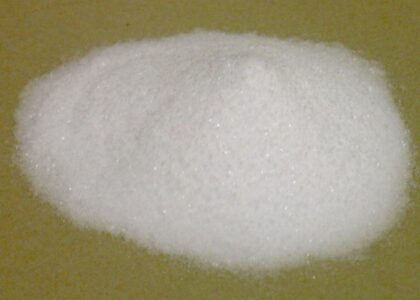The Cylinder Deactivation Systems Market report, authored by Future Market Insights—an ESOMAR Certified Market Research and Consulting Firm—unveils profound insights and meticulous analysis of the Cylinder Deactivation Systems market. Encompassing the research’s ambit and essence, the report scrutinizes the driving determinants, market expanse, and predictive statistics for Cylinder Deactivation Systems. It offers exhaustive breakdowns of revenue and shipment segments, with an extensive 10-year forecast till 2033. Furthermore, the document evaluates pivotal industry players, their market apportionments, the competitive terrain, and regional insights.
Analysis conducted by Future Market Insights (FMI) reveals that the Cylinder Deactivation Systems (CDS) Market is estimated to register a sum of US$ 4.5 billion by the end of 2023. It is projected to reach US$ 7.1 billion by 2033 while growing at 4.6% CAGR during the forecast period 2023 to 2033.
Request Sample Report to Ascend the Summit of Success, Guided by Expert Insights:
https://www.futuremarketinsights.com/reports/sample/rep-gb-17496
Overhead camshaft design is estimated to dominate the valve actuation method segment in terms of Market share by 2033. Sales are likely to register a 4.2% CAGR during the assessment period.
A cylinder deactivation system (CDS) is an innovative technology that helps in reducing fuel consumption and improving engine efficiency. This is achieved by deactivating some of the engine cylinders when not in use during cruising and low-power modes. It has been gaining popularity among automotive manufacturers and consumers alike due to its ability to optimize the performance of an engine, while also increasing mileage.
Increasing global emphasis on fuel economy and emissions regulations has made the adoption of CDS more critical for manufacturers to comply with environmental regulations and improve fuel efficiency. It has become important for consumers as automobiles with CDS systems provide significant advantages in fuel consumption over the medium to long-term, to non-CDS vehicles.
The advancements in engine design and control systems have allowed for the development of more efficient and reliable CDS technologies, which have contributed significantly to the growth of this Market.
With increasing awareness of climate change and the need to reduce carbon emissions, eco-friendly vehicles have become more popular. CDS technology is one of the forerunners helping achieve this goal.
Consumers are becoming more informed and demanding about fuel efficiency, and as such, manufacturers are focusing on improving the fuel efficiency of their vehicles using technologies such as CDS.
Several players in the automotive industry are partnering to improve their CDS technology and develop new solutions. This trend has led to a more competitive Market, with the benefits of technology transfer and knowledge sharing becoming apparent with every new batch of automobiles produced.
Hybrid vehicles are increasingly being adopted by consumers and manufacturers alike, and CDS technology is often used in conjunction with hybrid powertrains to improve efficiency and reduce emissions.
As automotive Markets continue to expand globally, especially in emerging economies, the demand for fuel-efficient vehicles is on the rise. CDS technology is becoming an essential requirement in these Markets, where fuel prices and environmental concerns are significant factors.
There are also some challenges and risks that need to be considered in the CDS Market. These include high implementation costs, compatibility issues with other engine technologies, and potential reliability issues with the system. The Market is highly competitive, with numerous players vying for Market share and technological dominance.
Key Takeaways From The Market Study:
- The global Cylinder Deactivation Systems Market is estimated to be valued at US$ 4.5 billion by 2023 end.
- The United States is set to register a sum of US$ 1.2 billion in the Market by 2033.
- China is forecast to expand at 4.5% CAGR in the Asia Pacific Market between 2023 and 2033.
- By component, the valve solenoid division is poised to grow at 4.4% CAGR during the projected timeframe of 2023 to 2033.
- Based on the valve actuation method, the overhead camshaft design segment is set to surmount at 4.2% CAGR in the global Market.
“Technological upgradation in engine design and system is likely to drive demand for cylinder deactivation system. Manufacturers are introducing deactivation systems that are adaptable to different engines, sizes, and configurations. Product differentiation for passenger, commercial, and heavy-duty vehicles would be key to growth,” – says a lead analyst at FMI.
Make Informed Decisions: Purchase now to receive Market Share Analysis of Top Players in the Isostatic Pressing Market, available at a discounted price:
https://www.futuremarketinsights.com/checkout/17496
Who is Winning?
Key players in the Market include Aisin Seiki Co. Ltd.; Borgwarner Inc.; Continental AG; Delphi Technologies; Denso etc.
Key companies are heavily investing in research & development activities to develop and enhance Cylinder Deactivation Systems. This includes improving the technology effectiveness, reliability, and integration of engine components.
Manufacturers strive to seamlessly integrate cylinder deactivation systems with engine management systems. This involves developing sophisticated control algorithms and software that monitor various engine parameters. It is used to determine the optimal conditions for cylinder deactivations.
Recent developments:
- In February 2022, Cummins Inc. is pleased to acquire Jacobs Vehicle Systems (JVS), a manufacturer of motor braking systems, cylindrical removal, start/stop technologies, and thermal management systems.
- In October 2019, Mitsubishi Electric Corporation recently revealed the start-up of a new factory in Gujrat, India. In the Indian Market, the company’s new factory will increase the output of items like motors, controllers for electrical steering, recirculating exhaust gas valves, and enormous magnet-resistance sensors.
Get More Valuable Insights:
Future Market Insights (FMI), in its new offering, provides an unbiased analysis of the global Cylinder Deactivation Systems Market presenting historical demand data (2018 to 2022) and forecast statistics for the period from 2023 to 2033.
The study incorporates compelling insights on the Cylinder Deactivation Systems Market based on components (valve solenoid, engine control unit, and electronic throttle control), valve actuation method (overhead camshaft design, pushrod design), and end-use (passenger cars, light commercial vehicles) across various regions.
Key Segments Profiled:
By Component:
- Valve Solenoid
- Engine Control Unit
- Electronic Throttle Control
By Actuation Method:
- Overhead Camshaft design
- Pushrod Design
By End-use:
- Passenger cars
- Light Commercial Vehicles
By Region:
- North America
- Latin America
- Europe
- East Asia
- South Asia
- Oceania
- Middle East & Africa
About Future Market Insights (FMI)
Future Market Insights (ESOMAR-certified market research organization and a member of the Greater New York Chamber of Commerce) provides in-depth insights into governing factors elevating the demand in the market. It discloses opportunities that will favor the market growth in various segments on the basis of Source, Application, Sales Channel, and End Use over the next 10 years.
Contact Us :
Future Market Insights, Inc.
Christiana Corporate, 200 Continental Drive,
Suite 401, Newark, Delaware – 19713, USA
T: +1-845-579-5705
For Sales Enquiries: sales@futuremarketinsights.com
Browse All Reports: https://www.futuremarketinsights.com/reports




